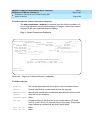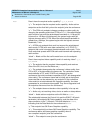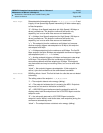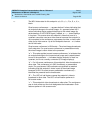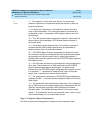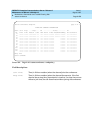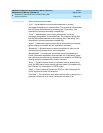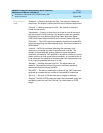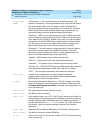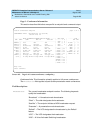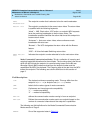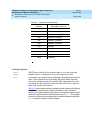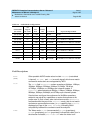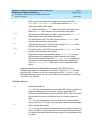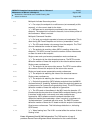
DEFINITY Enterprise Communications Server Release 6
Maintenance for R6vs/si
555-230-127
Issue 1
August 1997
Maintenance Commands and Trouble-Clearing Aids
Page 8-258status conference
8
Drop Reason
(cont’d)
“Endpoint” = Clearing received from DS1. The endpoint initiates the
disconnect. The endpoint notifies the MCU that it intends to disconnect.
“Far-end” = Clearing received from DS1. The network or endpoint
initiate the disconnect.
“Handshake” = Framing is never found or is lost for over 40 seconds
and the endpoint is disconnected. (the endpoint could not complete
initialization due to problems with finding Frame Alignment Signal
(FAS), Multi Frame Alignment (MFA) and corrected coded cap-sets)
“IDtimeout” = The H3.20 user unsuccessfully (three times) sends MCU
responses regarding the UIN/password Query. Each timeout period is
administered.
“Internal” = MCU has a problem allocating the necessary trunk
resources to route dial-out calls for specified dial-numbers. This
problem is associated with routing patterns or trunk-associated
translation (for example, TAC specified in the dial-out number or routing
pattern points to a trunk group without members), or indicates a lack of
trunk resources (for example, all trunk members are maintenance busy
or all in-service members are busy on a call).
“Network” = Clearing received from DS1. The disconnects the
endpoint. The endpoint with the disconnect notification capability
disconnects without notifying the MCU.
“Not-MCU” = The dial-out destination numbers of the “CAS” extensions
terminate to numbers that are not dial-in cascade MCU extensions.
“No-ring” = The is up for 30 seconds and no ringing is detected.
“Reorder” The MCU CPTR resources detect that no network trunks are
available to place the call. See “Dial-out” for a description of CPTR
usage.



